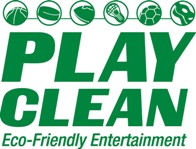Pepsi Center Makes Green Effort, From Air to Zamboni
Published 03-17-08
Submitted by Kroenke Sports Enterprises

DENVER,CO March 17, 2008 /PRNewswire/ -- There's virtually no part of Pepsi Center's arena operation that can't be considered for an environmentally friendly makeover and arena officials began showing off a number of them today -- from giant air circulating fans in the building's roof, to the Zamboni that cleans the hockey rink's ice.
(Photo: http://www.newscom.com/cgi-bin/prnh/20080317/LAM088-a)
(Logo: http://www.newscom.com/cgi-bin/prnh/20080317/LAM088LOGO-b)
"There's a significant challenge in retrofitting a building this large, but these are the right things to do for the environment," Kroenke Sports vice president of venue operations Dave Jolette said. "Even though this building is less than a decade old, it needed some large scale modifications to get things started."
The 19,000-seat Pepsi Center is privately owned by Kroenke Sports Enterprises (KSE) and is the home of the NBA Denver Nuggets, NHL Colorado Avalanche, NLL Colorado Mammoth and AFL Colorado Crush. The arena hosts more than 200 sporting events and concerts a year and is the site of the 2008 Democratic National Convention.
With the assistance of a number of government and private resources, Jolette and the arena's engineering crew found ways to conserve energy, recycle materials and reduce the building's carbon footprint. Pepsi Center became the first sports venue to join the Environmental Protection Agency's "Climate Leaders" program, an industry-government partnership that works to inventory and reduce greenhouse gas emissions on a company-wide basis to develop comprehensive climate change strategies.
The EPA and Department of Energy's ENERGY STAR program identified ways to cut waste in recyclable materials, water and electricity. Denver Water and the Waste Wise program provided input. And, Pepsi Center did an infrared scan in 2003 that showed areas where energy was escaping from the massive building.
That's when the investment and replacement began with some projects larger than others (savings noted are measured in metric tons of carbon dioxide (CO2), according to U.S. EPA measurements).
- -- Installation of giant downdraft fans -- viewable from the arena's
seating areas -- that re-circulate air trapped near the roof,
reducing the amount of energy needed to heat the arena bowl
-- Installation of a cardboard recycling baler expected to package more
than 100 tons of cardboard annually that had been going to landfill,
saving 311.95 metric tons of CO2 each year
-- Replacement of lights in the arena's two Club Level restaurants with
lower use compact fluorescent lamps (CFLs), saving 37,241 KWh
annually, or 25.71 metric tons of CO2
-- Installation of 52 solar panels on the arena's Blue Sky Grill
restaurant, providing electricity to the venue and saving 13,641 KWh
annually, or 9.42 metric tons of CO2
-- Purchasing renewable energy certificates that replace 100 percent of
the arena's electricity use, saving 11.2m KWh per year or 7,731.47
metric tons of CO2
Pepsi Center has reduced its normal operating annual energy consumption by 40,000 KWhrs, and is now recycling over 100 tons of cardboard and buying renewable energy certificates -- reducing Green House Gas emissions of over 8,000 Metric Tons of CO2.
"In more visual terms, that equates to more than 1,700 trees saved in cardboard recycling efforts and removing 500 cars from the road from energy reduction and renewable energy efforts," Jolette said.
The renewable energy certificates purchased by Pepsi Center have equally visual equivalencies with a savings of 8,724 metric tons of CO2 emissions and are equivalent to one of the following:
- -- the greenhouse gas emissions from 1,598 passenger vehicles per year
-- the CO2 emissions from 990,221 gallons of gasoline consumed
-- the CO2 emissions from 20,288 barrels of oil consumed
-- the CO2 emissions from 363,494 propane cylinders for home barbeques
-- the CO2 emissions from burning 45.6 rail cars worth of coal
-- the CO2 emissions from the annual electricity use of 1,155 average
"The best news is that this is just the start," Jolette continued. "This is a sustained effort and the program doesn't really have an endpoint. As long as there's a need to protect the environment and a new way to do it, we'll find a way to implement the change."
And, the Zamboni pit at Pepsi Center got a new heat bath system with raised water drainage that reduces both energy consumption and water waste.


